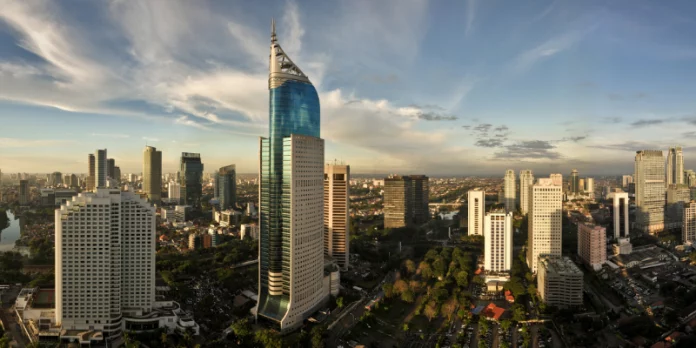Indonesia’s economic growth in the second quarter accelerated unexpectedly to its highest rate in three quarters, shored up by strong household and government spending, even as exports weakened with falling commodity prices.
Some economists still expect activity to slow in the second half of the year, with exports likely to keep falling due to weaker global demand and businesses potentially delaying investments ahead of general elections due in February 2024.
However, the government maintained its 5.3% economic growth target for this year and planned to boost spending this quarter, chief economic minister Airlangga Hartarto told reporters on Monday.
Southeast Asia’s biggest economy expanded 5.17% in the April-June quarter from the same period a year earlier, Statistics Indonesia data showed, outpacing the 4.93% growth predicted by economists polled by Reuters. First-quarter growth was revised up slightly to 5.04%.
On a quarterly, non-seasonally adjusted basis, GDP expanded 3.86%, compared with the poll’s prediction of 3.72% growth.
Despite Indonesia’s interest rate hikes of 225 basis points from August 2022 to January 2023, household consumption, which makes up over half of GDP, expanded 5.23% on a yearly basis last quarter, the quickest pace since the third quarter of 2022.
That was due to rising household spending for the Muslim fasting month and Eid al-Fitr festivities in late April and school holidays in June, the statistics bureau said.
Growth in investment and government spending also more than doubled to 4.63% and 10.62%, respectively, as the government expedited construction of roads and irrigation systems ahead of the end of President Joko Widodo’s final term in 2024.
Meanwhile, exports contracted 2.75% in the second quarter on a yearly basis, in stark contrast to last quarter’s growth of more than 10%.
Myrdal Gunarto, economist with Maybank Indonesia, said he might raise his bank’s full-year 2023 GDP growth outlook of 5.05%, but described the second quarter data as “a sign that economic activities had peaked”.
Myrdal said companies would likely pause investment decisions ahead of the elections, pointing to slower loan growth already in June.
The better-than-expected data may spur monetary policymakers to shift their focus from growth to the current account, as strong domestic demand typically leads to rising imports, said Fakhrul Fulvian, Trimegah Securities economist, who maintained his full-year 2023 GDP growth outlook at 5%.
Indonesia has reported a current account surplus every quarter from the July-September period of 2021, helping the rupiah perform better than most other emerging Asian currencies against the U.S. dollar.
The rupiah fell 0.1% against the dollar on Monday.
“With the economy holding up and domestic demand resilient, we remain of the view that Bank Indonesia (BI) will remain patient and continue to prioritise external stability, with an easing pivot unlikely this year,” said Krystal Tan of ANZ.
Airlangga pledged the government would secure enough food supply to mitigate the risk of food price inflation caused by drought due to the El Nino weather pattern.
Last year’s growth was 5.3%, a nine-year high. The central bank predicts GDP will expand in a range of 4.5% to 5.3% this year. – Reuters









